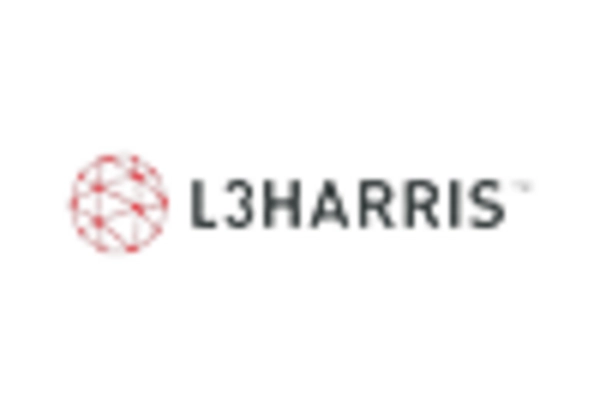Rising Threat of Terrorism
The increasing threat of terrorism has emerged as a primary driver for the Chemical Biological Radiological and Nuclear Security Market. Governments and organizations are compelled to enhance their security measures to counteract potential attacks involving chemical, biological, radiological, or nuclear materials. This heightened awareness has led to a surge in investments in advanced detection and response technologies. According to recent estimates, the market is projected to grow at a compound annual growth rate of approximately 5.2% over the next five years, reflecting the urgent need for robust security solutions. As nations prioritize public safety, the demand for comprehensive security frameworks continues to escalate, thereby propelling the market forward.
Regulatory Compliance and Standards
Stringent regulatory frameworks and compliance requirements are significantly influencing the Chemical Biological Radiological and Nuclear Security Market. Governments are implementing rigorous standards to ensure the safety and security of hazardous materials. This has resulted in organizations investing heavily in compliance measures, including advanced monitoring systems and training programs. The market is expected to witness a notable increase in demand for compliance-related technologies, as organizations strive to meet evolving regulations. In fact, the market for regulatory compliance solutions is anticipated to reach USD 3 billion by 2026, underscoring the critical role of adherence to safety standards in driving market growth.
Increased Public Awareness and Preparedness
Public awareness regarding the risks associated with chemical, biological, radiological, and nuclear threats is on the rise, significantly impacting the Chemical Biological Radiological and Nuclear Security Market. Educational campaigns and training programs are being implemented to enhance community preparedness and response capabilities. This growing awareness is prompting governments and organizations to invest in public safety initiatives, thereby driving demand for security solutions. The market is projected to expand as more stakeholders recognize the importance of preparedness in mitigating potential threats. As a result, the emphasis on community engagement and training is likely to play a pivotal role in shaping market dynamics.
Technological Innovations in Security Solutions
Technological innovations are reshaping the landscape of the Chemical Biological Radiological and Nuclear Security Market. The advent of cutting-edge technologies such as artificial intelligence, machine learning, and advanced sensor systems is enhancing detection capabilities and response times. These innovations enable security personnel to identify threats more effectively and mitigate risks associated with hazardous materials. The integration of smart technologies is expected to drive market growth, with projections indicating a market size of USD 10 billion by 2027. As organizations seek to leverage these advancements, the demand for sophisticated security solutions is likely to increase, further propelling the market.
International Cooperation and Funding Initiatives
International cooperation and funding initiatives are becoming increasingly vital for the Chemical Biological Radiological and Nuclear Security Market. Collaborative efforts among nations to address security challenges are fostering the development of joint programs and funding opportunities. These initiatives aim to enhance capabilities in detecting and responding to chemical, biological, radiological, and nuclear threats. As countries pool resources and expertise, the market is expected to benefit from increased investment in security technologies and infrastructure. The potential for funding from international organizations is likely to stimulate growth, as nations work together to bolster their security frameworks and ensure public safety.


















Leave a Comment